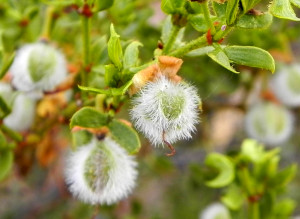Cajeput oil is produced by steam distillation of fresh leaves and twigs of the cajeput tree (Melaleuca leucadendra) and the paperbark tree (Melaleuca quinquenervia). Don’t confuse cajeput oil with tea tree oil (Melaleuca alternifolia) or niauli oil (Melaleuca viridiflora).
Contents
Uses
Cajeput oil is used to treat colds, headaches, toothache, and tumors; to loosen phlegm so it can be coughed up (as an expectorant); and as a tonic.
Some people apply cajeput oil to the skin for mites (scabies) and a fungal infection of the skin (tinea versicolor).
Cajeput oil is also used either alone or in combination with other ingredients in commercially available antiseptic lotions to treat joint pain (rheumatism) and other pains.
Some people inhale cajeput oil as an expectorant.
In dentistry, cajeput oil is used to relieve gum pain after a tooth is removed or lost.
In food and beverages, cajeput oil is used as a flavoring in very small amounts.
Benefits
Insecticide & Vermifuge: Cajuput oil is very efficient in killing and driving away insects. Its insecticidal properties are so strong that its diluted solution can be sprayed or vaporized with the help of a vaporizer to drive away mosquitoes, ants, and many other types of pests (of course, not cockroaches) from the rooms. Mosquito nets can also be dipped in its solution for added benefits. A diluted solution of cajuput oil can also be rubbed on the body to keep insects away. Futrthermore, it also kills intestinal worms if a very mild diluted solution in water is consumed.
Decongestant & Expectorant: Just like Eucalyptus Oil, cajuput oil is also an expert decongestant and expectorant. Being a decongestant, it gives immediate relief in congestion of the nose, throat, and other respiratory organs as well as for coughs, infections, and resultant inflammation of the throat and respiratory tracts such as laryngitis (larynx), pharyngitis (pharynx) and bronchitis (bronchi).
Stimulant & Sudorific: It stimulates the organs, creates a warming effect, promotes circulation, and activates secretions. Being a stimulant, it also stimulates the Eccrine glands, promoting perspiration and thus acting as a Sudorific. These effects are very beneficial to the body because they are essential in removing the toxins from the body, which perspiration is known to do.
Analgesic: It is analgesic in nature, meaning that it reduces feelings of pain. When applied locally, such as on an infected tooth in case of a toothache or rubbed on the forehead in case of a headache, it gives quick relief. If ingested, it can reduce pain in joints, headache, and muscles that may be related to cases of fevers and colds. However, consume only in highly diluted solutions.
Cosmetic & Tonic: It smooths and brightens skin while keeping it free from infections, thus it is used extensively in cosmetics, and antiseptic creams. It also tones up the skin and is hence used as a general skin tonic.
Febrifuge: It helps reduce fevers by fighting infections as well as by stimulating sweat, which cools down the body.
Carminative: Cajuput oil can give you relief from gas trouble, since it has carminative properties. It restricts the formation of gas and helps to remove the gas that has already formed in the intestines.
Antineuralgic: Neuralgia is a very painful condition in which almost the entire oral zone, including the throat, ears, tonsils, base of the nose, larynx, and pharynx and the surrounding areas suffer from severe pain. This pain is due to compression of the Glossopharyngeal or the ninth cranial nerve by the surrounding blood vessels, which tend to swell from chewing, eating, laughing, shouting or any other excitement or movement in that region. In this way, cajuput oil can give immense relief. As an analgesic, it reduces the feeling of pain on one hand while on the other, it cools down and relaxes the blood vessels, thereby reducing their swelling, and relieving the pressure on the ninth cranial nerve, giving immediate relief from the pain.
Caution
Very small amounts of cajeput oil are LIKELY SAFE when added to food as flavoring, but the safety of taking larger amounts by mouth is unknown.
Cajeput oil is POSSIBLY SAFE for most people when applied in medicinal amounts to unbroken skin, but it can cause allergic reactions.
It is POSSIBLY UNSAFE to inhale cajeput oil. It can cause breathing problems.
Special Precautions & Warnings:
Pregnancy and breast-feeding: There is not enough reliable information about the safety of taking cajeput oil if you are pregnant or breast-feeding. Stay on the safe side and avoid use.
Children: Cajeput oil is LIKELY UNSAFE when inhaled or applied to the faces of children. It can cause serious breathing problems.
Asthma: Inhaling cajeput oil might cause an asthma attack.
Interactions
None are recorded.
Other names
Aceite de Cajeput, Cajeputi Aetheroleum, Cajeputier, Essence de Caia-Pouti, Essence de Cajeput, Huile de Cajeput, Huile de Cajoupouli, Kajuput, Kajuputi leucadendra, Kayaputi, Melaleuca leucadendra, Melaleuca Leucodendron, Melaleuca quinquenervia, Myrtus leucadendra, Paperbark Tree Oil, Punk Tree
Reference
OrganicFacts, https://www.organicfacts.net/health-benefits/essential-oils/benefits-of-cajuput-essential-oil.html

